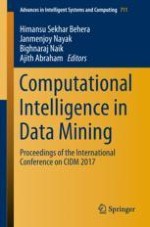The International Conference on “Computational Intelligence in Data Mining” (ICCIDM), after three successful versions, has reached to its fourth version with a lot of aspiration. The best selected conference papers are reviewed and compiled to form this volume. The proceedings discusses the latest solutions, scientific results and methods in solving intriguing problems in the fields of data mining, computational intelligence, big data analytics, and soft computing. The volume presents a sneak preview into the strengths and weakness of trending applications and research findings in the field of computational intelligence and data mining along with related field.
